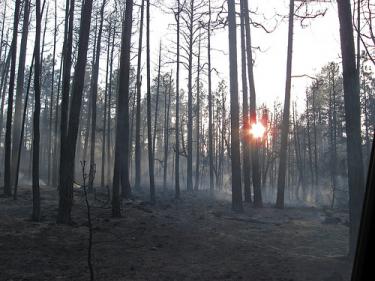The Good and Bad of Forest Fires
Forest fires help in the natural cycle of woods' growth and replenishment. They:
- Release seeds or otherwise encourage the growth of certain tree species, like lodgepole pines
- Clear dead trees, leaves, and competing vegetation from the forest floor, so new plants can grow
- Break down and return nutrients to the soil
- Remove weak or disease-ridden trees, leaving more space and nutrients for stronger trees
- Keep tree stands thin and open, letting more sunlight in so trees stay healthier
- Improve wildlife habitat
But when fires burn too hot or when they’re in the “wildland-urban interface” (the places where woodlands and homes or other developed areas meet), they can be damaging and dangerous. Some possible effects of these fires are:
Get Tips for Landowners! Sign up today and learn more about your woods and what you can do to protect and care for your land.
- Damaged or destroyed trees—when fires burn too intensely and reach tree crowns, they can hurt even strong, well-established trees
- Charred, damaged soils
- Floods or landslides in areas where the soil is most severely burned
- Damaged homes and other structures
- Smoke, which can irritate the eyes and respiratory system and worsen chronic heart and lung diseases, including asthma
Wildfires can be powerful and frightening. Every landowner hopes to never face one. But if a wildfire should happen on your property, there are steps you can take to keep yourself and your land safe.
*contains information adapted from the Project Learning Tree Focus on Forests curriculum.
Previous page
Next page
How can I get more tips?
It’s simple! Enter your email below.

